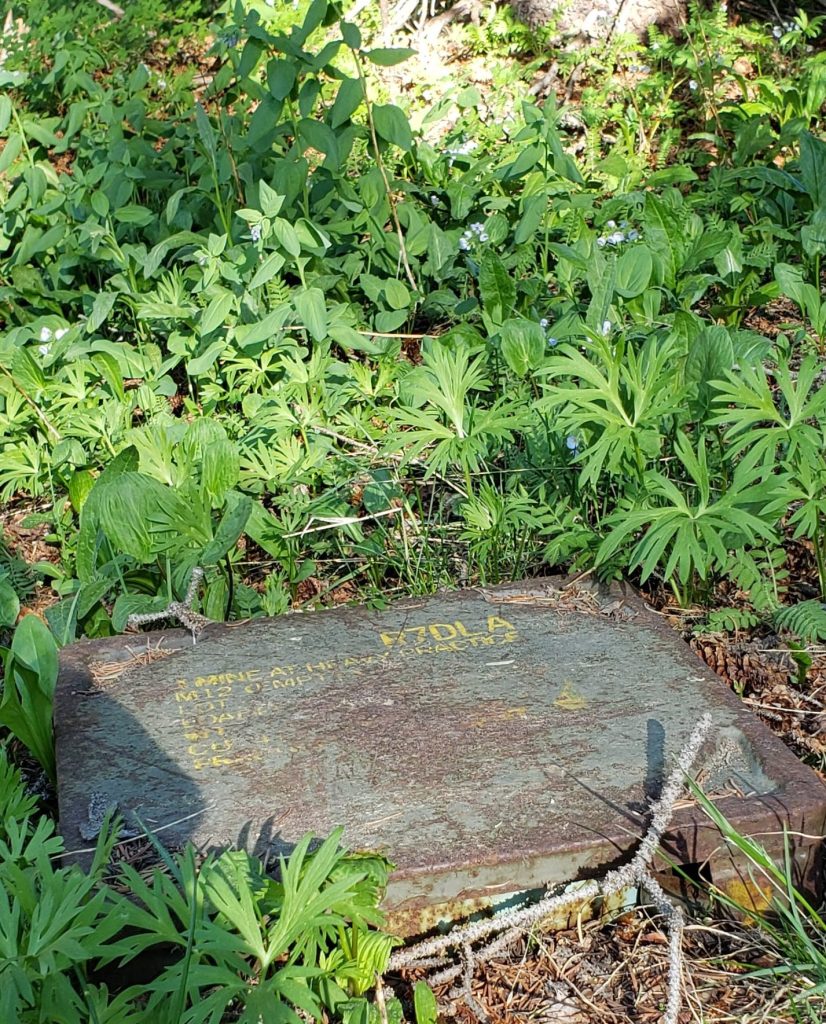Explosive disposal team deploys to Camp Hale after a hiker finds landmine

Courtesy image/Eagle County Sheriff’s Office
An Explosive Ordnance Disposal team has destroyed a landmine that was discovered by a hiker in the Camp Hale Area, the Sheriff’s Department announced Tuesday.
The team was deployed out of Fort Carson and was able to locate the device thanks to the special care the hiker took in photographing and documenting the landmine and reporting it to the Eagle County Sheriff’s Office. The report came in on July 20.
The Sheriff’s Office, in a Facebook post on Tuesday, said the team explained that the landmine was left behind “from the training day of the 10th Mountain Division that was stationed at Camp Hale.”
The event has been the latest in a long line of discoveries by hikers at Camp Hale, going back to the 1940s in Eagle County. Constructed in 1942, Camp Hale is a former U.S. Army World War II training site that hosted an estimated 14,000 troops before being decommissioned in November of 1945. The site was designated as a National Monument by President Biden in 2022.
On Aug. 9, 1946, the Eagle Valley Enterprise reported that an unexploded shell had been found recently in the Camp Hale area, and the U.S. Army had returned to the area “for the purpose of again hunting out shells and exploding them.”

Support Local Journalism
In 1997, when an A-10 attack plane piloted by U.S. Air Force Capt. Craig Button mysteriously crashed into Gold Dust Peak south of Eagle, curiosity was renewed about debris in the area, and a hiker on Whitney Peak, during the summer of 2000, thought she had discovered a piece of the debris from Button’s wreck.
It turned out to be a piece of a mortar round from the Army’s World War II training activities, and as a result, roughly 1,400 acres of land in the Eagle Park area of Camp Hale was closed to the public in September of 2000.
In 2001, hunters found an 81-millimeter mortar round in the Camp Hale area, which was reported to be the second time hunters had notified officials of live rounds during hunting season. In 2002, the Forest Service enlarged the closure area after finding more unexploded munitions.
“Explosives experts from Fort Carson on Tuesday destroyed the latest device — a 3.5-inch anti-tank rocket that was found near the East Fork of the Eagle River at an access road,” the Associated Press reported on Sept. 25, 2002. “It was the seventh time in two years explosive devices have been discovered and destroyed on site.”
A $2 million cleanup ensued, and in June of 2003, “a 14-person crew armed with metal detectors” walked the area shoulder-to-shoulder, the Vail Daily reported, “sweeping a 400-acre portion of the valley floor to clear unexploded munitions from the East Fork section of Camp Hale.”
On the first day of sweeping, crews found portions of hand grenades, artillery and mortar shells and other explosive devices, the Vail Daily reported, and the explosives were collected, catalogued and recorded for historical purposes. By June 20, experts had exploded nine potentially explosive devices, the Associated Press reported.
In August of 2003, Allen Best with Mountain Town News reported that rifle grenades and bazooka rockets were among the 31 pieces of unexploded munitions found at Camp Hale during the cleanup.
A 2005 estimate said removing every piece of what might have been military ordinance from the 2,400 formerly used defense areas across the U.S. could cost $12 billion, the Associated Press reported. Camp Hale was referenced in the 2005 report as an area still seeing active cleanups.
Make staying informed the easiest part of your day.
Sign up for daily or weekly newsletters at VailDaily.com/newsletter
Nationwide, “While there have only been two cases nationwide over the last 20 years of anyone being hurt or killed by old military ordnance, the federal government is spending $145 million over a six-year period to try to assess and inspect each site for the danger posted by unexploded munitions,” the Associated Press reported in October of 2005.
The Eagle County Sheriff’s Office, in Tuesday’s post, said there has been “a great effort on the part of the U.S. Army to sweep and clear the area of any dangers.”
But since then, “as the years go by, we have received reports of leftover equipment at Camp Hale.”
The Sheriff’s Office issued a reminder to recreationists exploring the newly designated National Monument Camp Hale: “Should you ever locate any suspicious item, please document your location and contact the Sheriff’s Office as soon as possible.”











